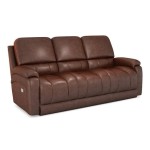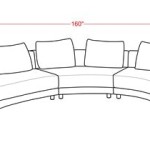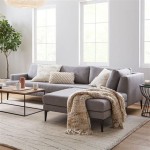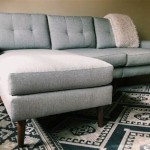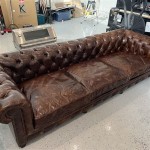Futon Versus Sleeper Sofa: A Comparative Analysis of Comfort
The quest for versatile furniture that maximizes space efficiency often leads to the consideration of both futons and sleeper sofas. Both serve the dual purpose of providing seating during the day and transforming into a sleeping surface at night. However, the level of comfort offered by each option can vary significantly, influencing the overall user experience. This article provides a detailed comparison of the comfort aspects of futons and sleeper sofas, examining the underlying design, materials, and functionality that contribute to their respective levels of comfort.
Mattress Quality and Support
The most significant factor determining the comfort of both a futon and a sleeper sofa is the quality of the mattress. Futons typically utilize a single, foldable mattress that serves as both the seat cushion and the sleeping surface. These mattresses can range in material from cotton batting to foam and innerspring constructions. Traditional cotton futon mattresses, while often more affordable, tend to compress over time, leading to uneven support and potential discomfort. Foam futon mattresses, particularly those made with memory foam or latex, generally offer improved support and pressure relief. However, the folding mechanism inherent to futons can still create seams or creases in the mattress, which some users may find bothersome during sleep.
Sleeper sofas, on the other hand, often incorporate a separate mattress that is folded and stored within the sofa frame. These mattresses can also vary in construction, ranging from thin innerspring mattresses to thicker foam mattresses. While some sleeper sofas feature air mattresses, these are often perceived as less comfortable due to their potential for deflation and uneven support. The key difference between a futon mattress and a sleeper sofa mattress lies in the intended use case. Sleeper sofa mattresses are specifically designed for sleeping, whereas futon mattresses are designed for both sitting and sleeping. This distinction can lead to differences in thickness, support, and overall construction.
The support structure beneath the mattress is also crucial. Futons typically have a slatted frame, which can provide adequate support if the slats are properly spaced and constructed. However, poorly designed futon frames with wide gaps between the slats can lead to sagging and discomfort. Sleeper sofas usually have a metal frame with a supporting platform for the mattress. The quality of this frame directly impacts the comfort and longevity of the sleeper sofa. A sturdy, well-engineered frame will provide better support and reduce the likelihood of uncomfortable sagging.
Furthermore, mattresses on sleeper sofas are often thinner compared to standard mattresses used on traditional beds. This reduced thickness can impact the overall comfort, particularly for those accustomed to sleeping on thicker mattresses. However, some high-end sleeper sofas incorporate thicker, more comfortable mattresses that closely resemble those found in conventional beds. The user must consider if the space is for long term or short term sleeping arrangements when deciding on the thickness of a mattress.
Seating Comfort and Ergonomics
Beyond the sleeping surface, the seating comfort of both futons and sleeper sofas is an important consideration. A comfortable futon should provide adequate back support and cushioning for extended periods of sitting. However, the design constraints imposed by the foldable mattress can sometimes compromise seating comfort. Futons with thicker mattresses may feel too firm for sitting, while those with thinner mattresses may lack sufficient support. The angle of the backrest is also a crucial factor, as a poorly angled backrest can lead to slouching and discomfort.
Sleeper sofas, designed primarily for seating, often offer superior ergonomic support compared to futons. The cushions are typically constructed with a combination of foam, fiberfill, and innerspring components, providing a more plush and supportive seating experience. The backrests are also designed with ergonomics in mind, often featuring contoured shapes and lumbar support. The depth of the seat is also important, as a seat that is too deep or too shallow can lead to discomfort. Armrests are a contributing feature of sleeper sofas that futons usually lack, offering extra support. The presence of armrests can greatly improve seating ergonomics, especially for prolonged periods of sitting.
The upholstery material also plays a significant role in seating comfort. Fabrics such as microfiber, velvet, and leather offer different textures and levels of breathability. Leather, while durable and stylish, can become hot and sticky in warm weather. Microfiber and velvet are generally softer and more comfortable to the touch, but may be more prone to staining. The choice of upholstery material should be based on individual preferences and lifestyle considerations.
Moreover, the overall aesthetics of the seating arrangement contribute to the perceived comfort level. A visually appealing and well-designed piece of furniture can enhance the user's sense of relaxation and well-being. Sleeper sofas often offer a wider range of design options compared to futons, allowing users to select a style that complements their existing decor. The styles range from modern, traditional, to contemporary.
Durability and Longevity
The durability and longevity of both futons and sleeper sofas directly impact their long-term comfort. A poorly constructed futon or sleeper sofa will likely experience premature wear and tear, leading to sagging, squeaking, and other issues that compromise comfort. Futons, with their simpler construction, can be relatively durable if properly maintained. However, the folding mechanism and the mattress itself are susceptible to wear and tear over time. The frame material is also an important consideration, with solid wood frames being more durable than those made from particleboard or metal.
Sleeper sofas, with their more complex mechanisms and internal components, may require more maintenance to ensure longevity. The metal frame, folding mechanism, and upholstery are all potential points of failure. High-quality sleeper sofas are constructed with durable materials and robust mechanisms, designed to withstand repeated use. However, cheaper models may be prone to breakage and require frequent repairs or replacements. The long-term value of the object will depend on the quality and the degree of usage. A higher quality purchase can result in fewer overall costs.
The mattress is also a key factor in determining the overall lifespan of both futons and sleeper sofas. Mattresses made from high-density foam or innerspring coils tend to be more durable than those made from cheaper materials. Regular cleaning and maintenance, such as rotating and flipping the mattress, can also help to extend its lifespan. Using a mattress protector can help prevent stains and damage, further extending the mattress's longevity.
Furthermore, the user's weight and sleeping habits can also influence the durability of both futons and sleeper sofas. Heavier individuals may place more stress on the frame and mattress, leading to accelerated wear and tear. Those who frequently use the futon or sleeper sofa as a bed may also experience more rapid deterioration of the mattress. This can vary from person to person depending on the frequency of usage.

Sofa Beds Vs Futons Which Is Right For Your Home Jennifer Furniture

Sleeper Sofa Vs Futon What S The Difference Bed Blog By Sleepers In Seattle

Sleeper Sofa Vs Futon Choose The Right Option Apt2b

Best Sleeper Sofas 12 Couches Your Guests Won T Mind Sleeping On Time Stamped

The 21 Best Sleeper Sofas Of 2024 Based On Reviews

Check Our Blog What S The Difference Between A Futon Sofa Bed

10 Best Sleeper Sofas Of 2024 Tested Reviewed By Experts

Is A Sofa Bed As Comfortable Couch

Upgrades To Make A Sofa Bed Worth Sleeping On Reviews By Wirecutter

Wonder Comfort Gray Memory Foam Futon Sofa Bed Foldable Convertible Loveseat Tn 267fa Dg The Home Depot
Related Posts



